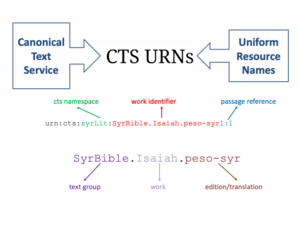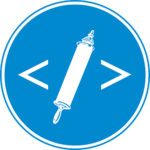In cooperation with Brill publishers, the Eep Talstra Centre for Bible and Computer (ETCBC) and the Peshitta Foundation have prepared an electronic version of Leiden Peshitta edition, Vetus Testamentum Syriace. With the recent publication of the volume containing Jeremiah and related literature (2019), the edition is reaching its completion: 15 out of 17 volumes have been published. The electronic Peshitta text includes the main text as well as the variant readings from the critical apparatus of the 15 published volumes and the running text of the two remaining volumes. For those two volumes for which no edition text is available yet, we provide the text of manuscript Codex Ambrosianus. (For details see Van Peursen’s Introduction to the Electronic Peshitta Text.) The edition text and the variants will be added as soon as these two final volumes are completed.
For the Brill Peshitta Portal Project, Hannes Vlaardingerbroek invested in the development and optimization of an OCR tool. This tool was used for an OCR procedure for the complete printed edition. This involved a lot of challenges, especially regarding the OCR of the critical apparatus in which Syriac words and phrases, notifications of textual witnesses in Latin script and specific symbols that are peculiar to the conventions of the edition are intertwined.
As to the main text of the edition, the output of the OCR was compared with the available electronic texts of the Peshitta Institute. This resulted in an improvement of the text through elimination of the discrepancies. Where the edition text and the electronic texts differed, the comparison with the manuscripts sometimes revealed an error in the printed edition. In these cases the electronic Brill Peshitta Portal will contain the corrected text.
Further, there were challenges regarding editorial decisions, the interpretation and presentation of variant readings, and the question as to the basic requirements of an electronic edition compared with the printed edition. We needed to have the text not only as a copy of the pages of the edition (in that case, scanning all the pages of the printed edition would have been enough), but as an electronic corpus, which is also computer-readable and can be used for linguistic and textual analysis.
For the online edition the CTS (Canonical Text Service) architecture is used. Combining CTS with the open standard of TEI XML proved to be effective to produce sustainable and unequivocal text that can be read by both humans (with intuitive references) and machines (with unique clear-cut identifiers). The CTS make it possible to refer to passages in an unequivocal way by means of Unique Resource Names (URNs) even if, for example, the Peshitta versification differs from that of the Hebrew source text. This required a number of modifications from our starting point, the printed Peshitta edition, including, for example, the explication of information that remains implicit in the printed edition.
The CTS architecture is the basis for the Brill Scholarly Editions platform, a digital publication platform for text editions, translations, and commentaries with a growing number of resources becoming available. The Peshitta edition, including all the variant readings, will be published in this platform.



